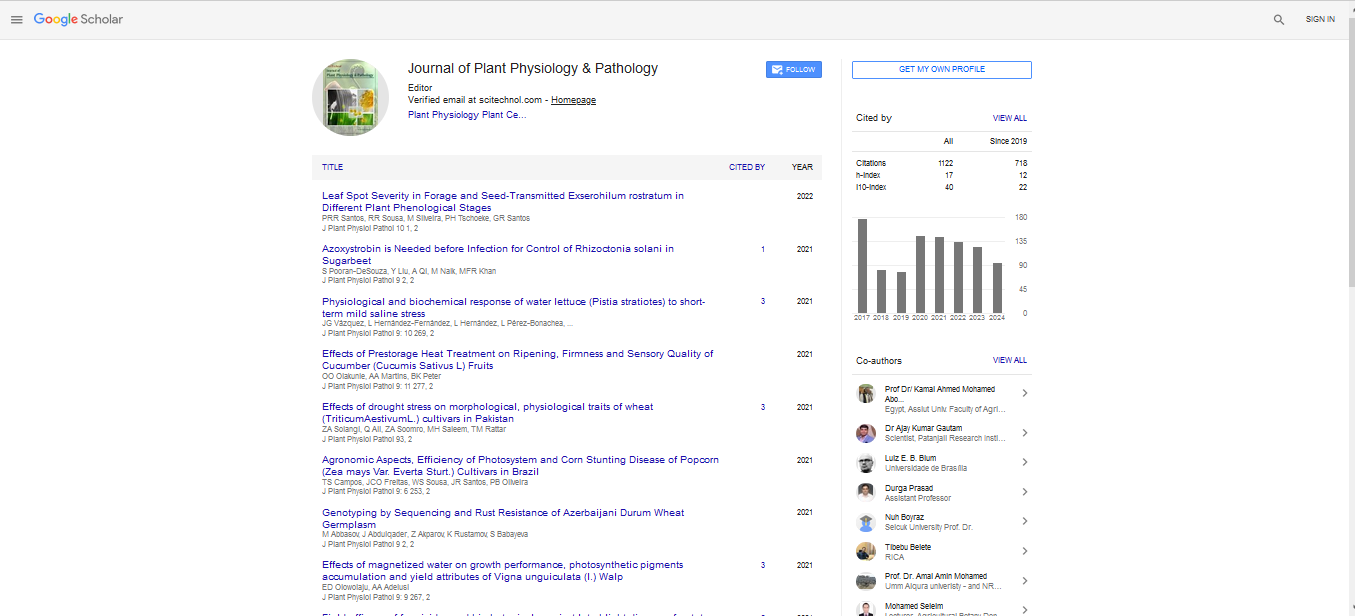Mining the underground world of Fusarium species
Manika Pradhan
University Crescent, USA
: J Plant Physiol Pathol
Abstract
Root rots are widely distributed and economically important diseases of all major crops grown in North America. Random patches of stunted plants are consistent with root rot symptoms. In some cases, pathogen complexes (Fusarium, Rhizoctonia, Pythium, Phytopthora species) which cause root rot either individually or in combination, are isolated from the same infected tissues. Fusarium complexes are commonly associated with root rot. Plant stressors such as herbicide injury, foliar disease, and environmental and soil conditions such as hail damage, too much moisture, drought or salinity render plants more susceptible to root rot. Moreover, these soil borne pathogens can survive in affected plant residues and on asymptomatic hosts in soil. Root rot interferes with root nodulation in legume crops and reduces plant biomass. There are limited options for management within a season once the root rot is established. Fusarium species that were once considered pathogens of only cereal crops have now moved to other crops. Several species of Fusarium are regularly isolated from agar plate tests of discoloured, infected roots of legume crops including soybean and pea plant samples submitted from different parts of the province of Manitoba to the Crop Diagnostic Centre (CDC) laboratory, Winnipeg, Manitoba, Canada. Fusarium graminearum, F. oxysporum, F. avenaceum, and F. solani were isolated based on visual identification. These cultures await polymerase chain reaction analysis to confirm their presence in infected pulse and legume roots. A 7-year upward trend of Fusarium infection on roots and stems of soybean obtained by mining the database at CDC is also reported in this presentation.
Biography
Manika Pradhan is crop specelist, She published several journals and articles.
E-mail: Manika.Pradhan@gov.mb.ca
 Spanish
Spanish  Chinese
Chinese  Russian
Russian  German
German  French
French  Japanese
Japanese  Portuguese
Portuguese  Hindi
Hindi 
